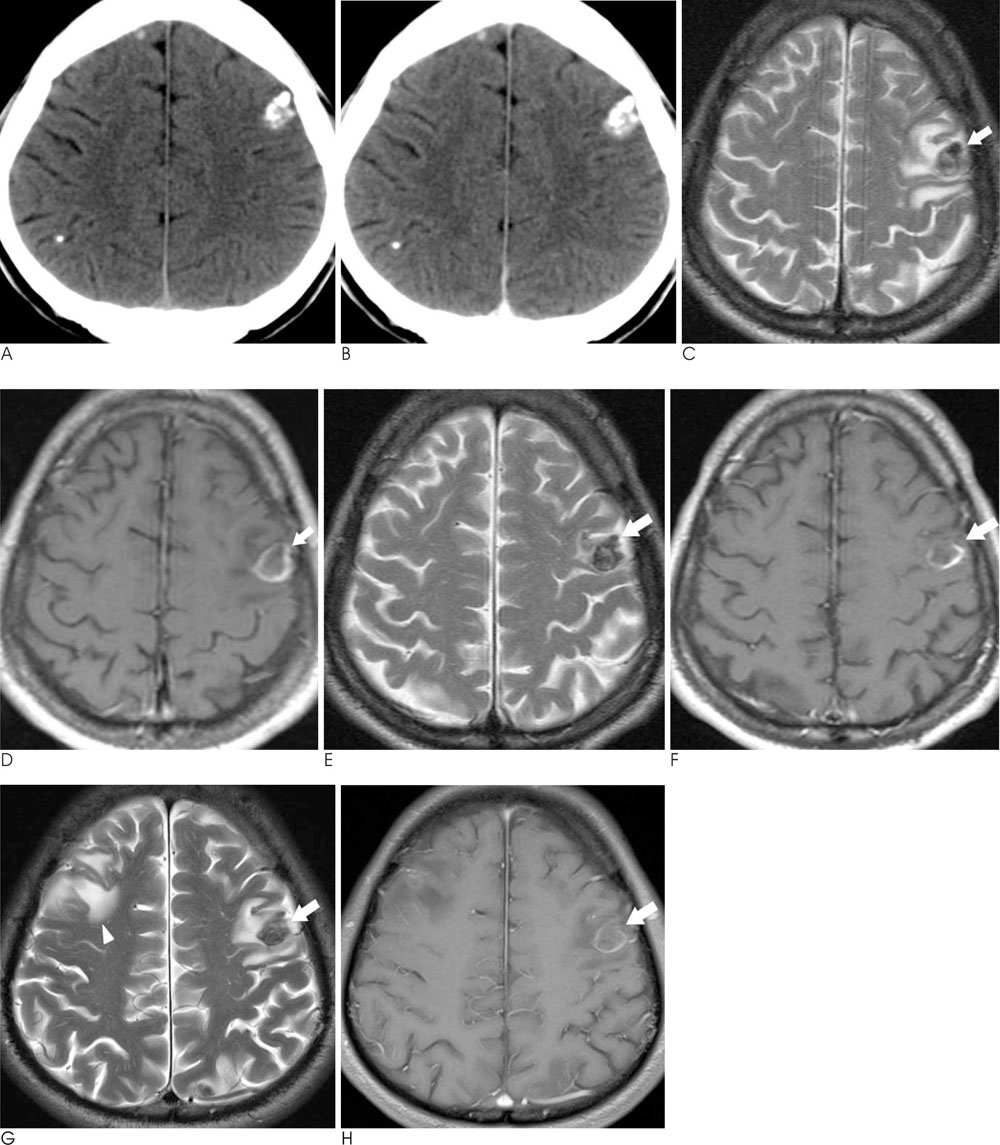J Korean Soc Radiol.
2010 Jul;63(1):15-18. 10.3348/jksr.2010.63.1.15.
Second Reactivation of Neurocysticercosis: A Case Report
- Affiliations
-
- 1Department of Radiology, Gachon University, Gil Hospital, Incheon, Korea. h2y@gilhospital.com
- KMID: 2208880
- DOI: http://doi.org/10.3348/jksr.2010.63.1.15
Abstract
- This report describes the first case involving a second reactivation of neurocysticercosis. There was peripheral enhancement and surrounding edema at multiple calcified lesions in both cerebral hemispheres on the brain MRI. One must be aware of the possibility of reactivation of neurocysticercosis to make the correct diagnosis.
Figure
Reference
-
1. White AC Jr. Neurocysticercosis: Updates on epidemiology, pathogenesis, diagnosis, and management. Annu Rev Med. 2000; 51:187–206.2. Kong Y, Cho SY, Cho MS, Kwon OS, Kang WS. Seroepidemiological observation of taenia solium cysticercosis in epileptic patients in Korea. J Korean Med Sci. 1993; 8:145–152.3. Escobar A. The pathology of neurocysticercosis. In : Palacios E, Rodriguez-Carbajal J, Taveras JM, editors. Cysticercosis of the central nervous system. Springfield, III: Charles C. Thomas;1983. p. 27–54.4. Hawk MW, Shahlaie K, Kim KD, Theis JH. Neurocysticercosis: a review. Surg Neurol. 2005; 63:123–132.5. Garcia HH, Del Brutto OH. Imaging findings in neurocysticercosis. Acta Trop. 2003; 87:71–78.6. Sheth TN, Pillon L, Keystone J, Kucharczyk W. Persistent MR contrast enhancement of calcified neurocysticercosis lesions. AJNR Am J Neuroradiol. 1998; 19:79–82.7. Sheth TN, Lee C, Kucharczyk W, Keystone J. Reactivation of neurocysticercosis: case report. Am J Trop Med Hyg. 1999; 60:664–667.
- Full Text Links
- Actions
-
Cited
- CITED
-
- Close
- Share
- Similar articles
-
- Calcified Neurocysticercosis that Invaded the Subarachnoid Space Presenting as Focal Status Epilepticus
- Extraparenchymal (Racemose) Neurocysticercosis and Its Multitude Manifestations: A Comprehensive Review
- Neurocysticercosis Presenting as Homonymous Hemianopia
- A Case of Neurocysticercosis in Entire Spinal Level
- Stereotactic Surgery of Neurocysticercosis


